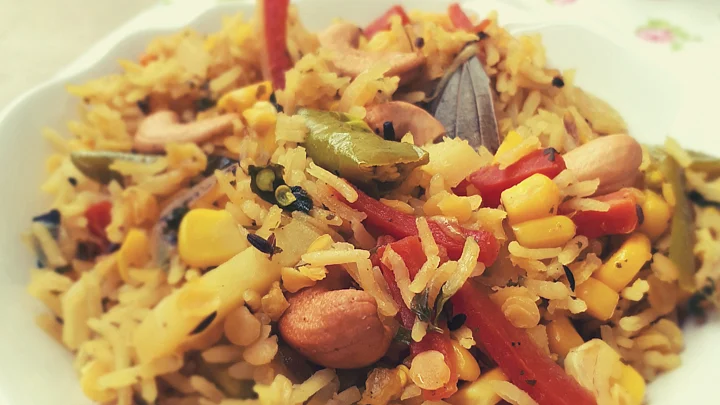Masoor dal was always a mystery to me, having grown up with a niggling suspicion about it, in a staunch, “pure vegetarian” South Indian household. After all, who can resist succumbing to chants that tarried between two ends of the spectrum: “non-palatable,” to “poisonous,” in reference to any ingredient or food that was considered non-vegetarian or non-satvik? There were many in the line-up that rightfully earned my presentiment this way – including cauliflower and mushroom.
I now cook exclusively with all of those things, and have survived to tell the tale. How the shift happened is just as much of a story – as is that of my survival: I married a Bengali.
The first time I ate masoor dal, I didn’t make much of it: it was a bland canvas in a way, which simply took on other flavours and depths.
As the years rolled on, I came to discern its true personality: it cooks without coaxing and prepping, easily and comfortably, unlike its other popular cousin, chana dal, and does have a taste of its own – pleasant and sweet. In a pot, if left to simmer lackadaisically, it works out the algebra of water, turmeric and salt along the way – or, if you put it in the pressure cooker – turns into a luxurious mush, lightly exposing its dainty white flecks, when carefully monitored for the number of whistles (which are few).
No more alien to me, this red lentil is as much a reminder of our Bengali friends – the Bachchu family – as it is of my mother’s stern voice, cautioning me to keep away from it (and them), on the days they’d invite me over.
It is a saviour on dull days when the will to cook anything is at its lowest – perked up with a drizzle of lemon juice after a simple preparation, flowing smoothly from the ladle over a fluffy mound of rice, while a blob of red hot mango pickle looks on from the sidelines; and a cheery companion on happy days, as I twist the lid off the cooker and allow the steam of this favourite pulao, aromatic and spicy, to caress my face, while the family clanks their spoons against the rims of my prized English countryside floral china, a behaviour I tackle somewhat graciously, after we’ve eaten.
Masoor Dal Pulao
(Serves 2)
Ingredients:
- ¼ cup split Masoor Dal, washed and soaked for 1 hour*
- ¾ cup Basmati rice, washed and soaked for 1 hour
- 2 tablespoons groundnut oil
- 1 bay leaf
- 2 ¼ inch cinnamon sticks
- 5-6 cloves
- 1 teaspoon cumin seeds
- ¼ teaspoon turmeric
- 2-3 green chillies, slit
- 2 thinly sliced onions
- 1 teaspoon grated ginger
- ½ cup mixed vegetables: carrot, beans, potatoes, sliced thin and long, and some peas or corn
- ½ teaspoon roasted coriander+fennel powder
- 3 medium tomatoes, grated or pureed
- Salt to taste
- 1 teaspoon brown sugar
- 2 cups water
- 1 teaspoon ghee
- A handful of roasted cashews
Method:
- Wash and soak the dal and rice, set aside.
- In a white-mouthed pot, heat the oil, add the bay leaves, cinnamon, cloves, cumin.
- After a few seconds, add the turmeric, green chillies and onions, stir fry until the onions turn brown.
- Add the ginger, mix it in, then add the vegetables and stir-fry for about 3-4 minutes.
- Add the spice powder, mix well.
- Add the tomatoes, and make sure they are mixed in thoroughly.
- Put in the dal and rice, then the salt and sugar, mix well.
- Add the water, and the ghee, and allow it to cook on medium heat for a few minutes, until it comes to a boil.
- Close the lid, and allow it to simmer on low heat for 5 minutes.
- Turn off the heat, and let it stay for 10 minutes before opening the lid.
- Add the cashews, mix gently and serve hot, with curd, pickle, papad or just like that!
(Ranjini is a teacher by day and writer by night. She writes exclusively on food and culture, and in this series, she will share little snippets and insights from her culturally mixed kitchen, which have helped mould her into a multitasking head-hasher, who can whip up anything from Akki Rotti (thanks to her South Indian genes) to Dhokar Dalna (using part toor-dal, no less, thanks to her Bengali in-law inheritance) at a moment's calling.)
(At The Quint, we question everything. Play an active role in shaping our journalism by becoming a member today.)
